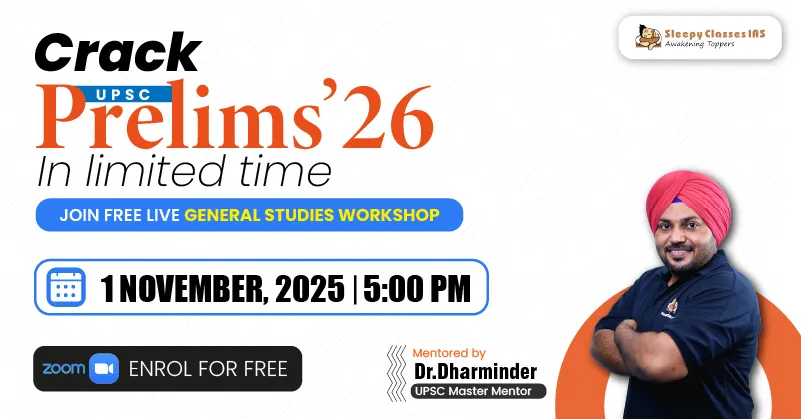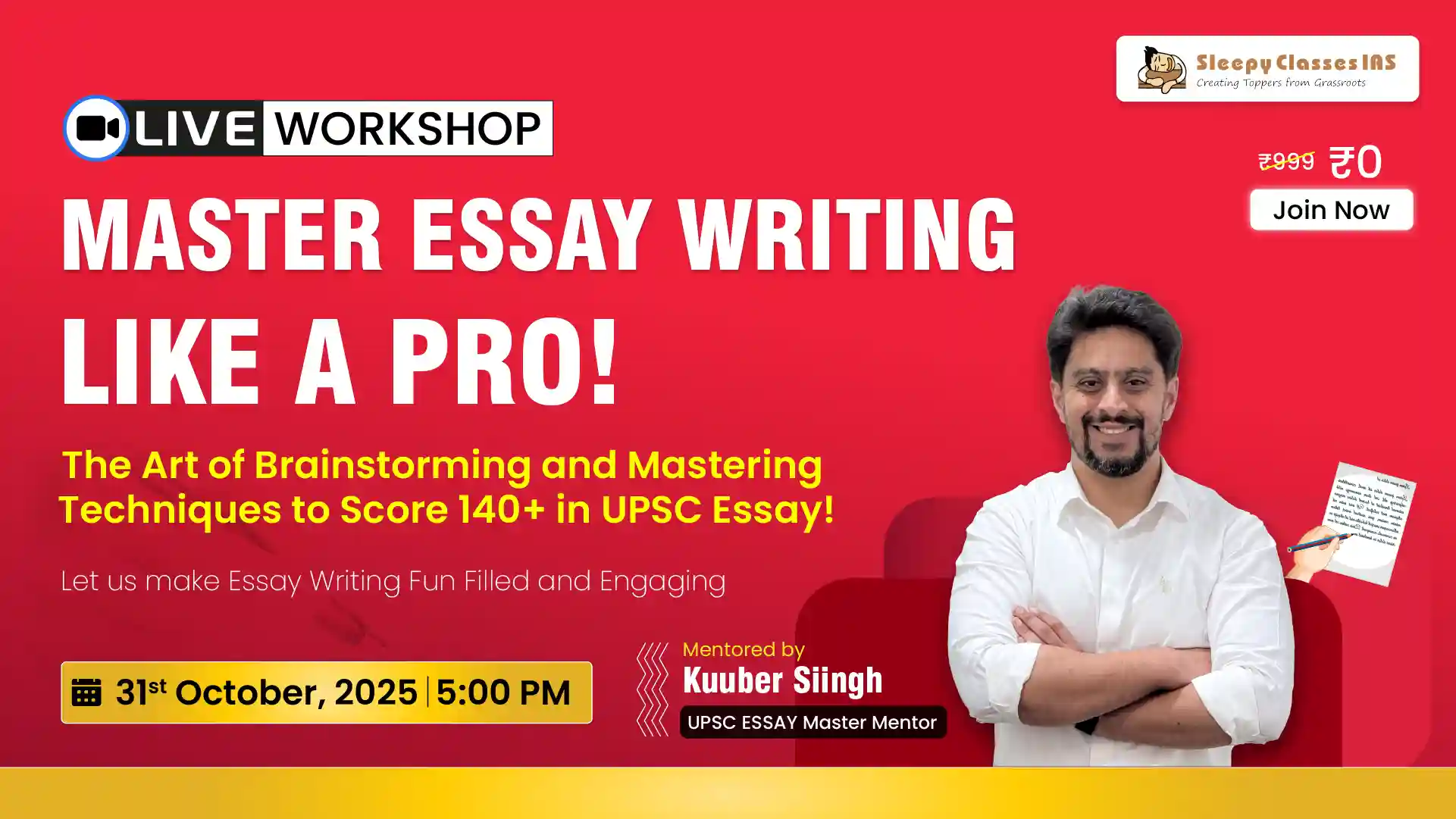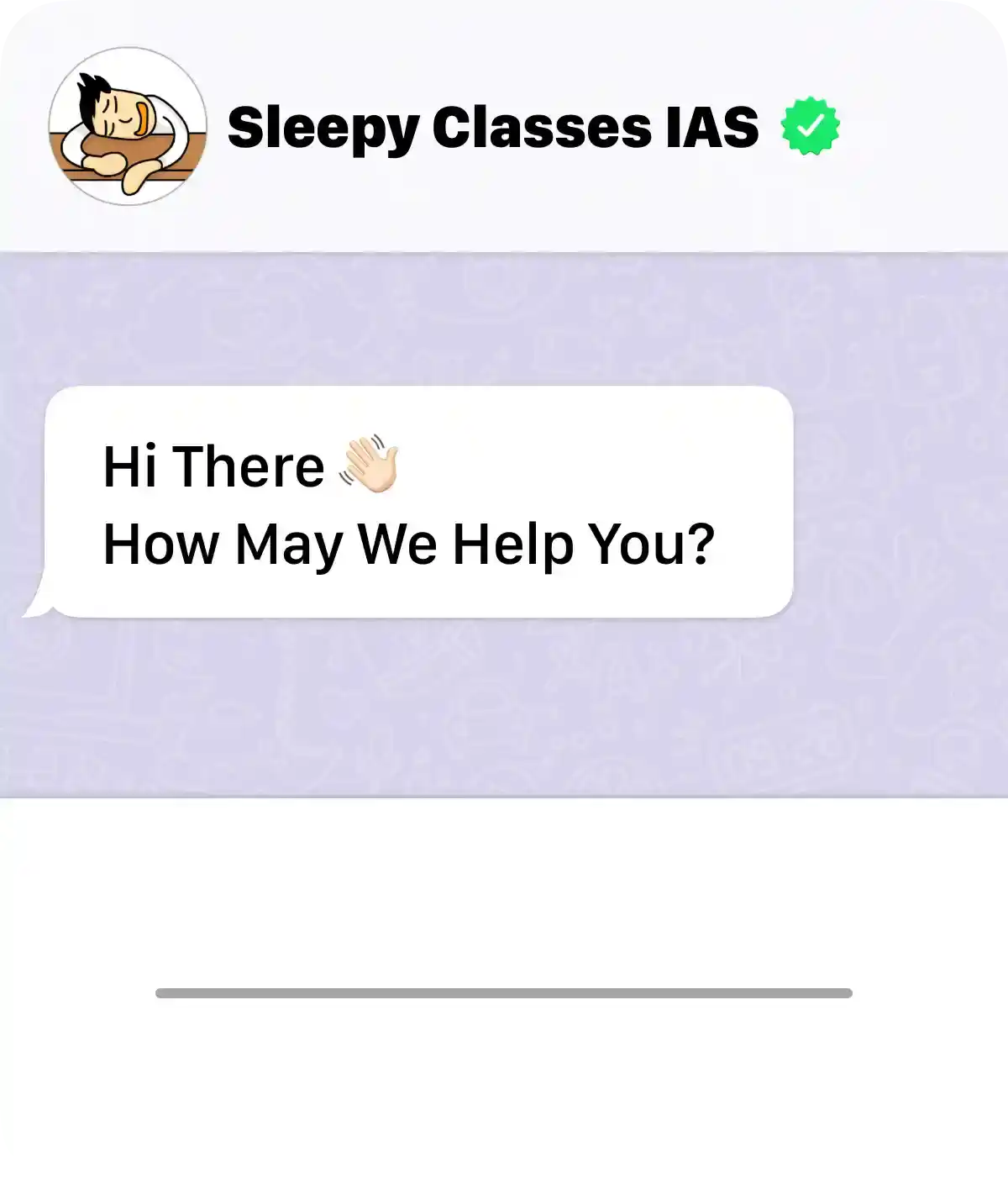Artificial Intelligence (AI) and the Internet of Things (IoT) are not just buzzwords anymore. They’re shaping how we approach UPSC 2025. These technologies are weaving into the fabric of UPSC preparation, offering fresh ways to learn, study, and even take exams. It’s like having a personal assistant and a smart classroom rolled into one. But what does this really mean for students? And how exactly are AI and IoT making a difference? Let’s break it down.
Key Takeaways
- AI is changing how students prepare for UPSC exams, making learning more personalized.
- IoT devices are creating smarter study environments, helping students stay connected and engaged.
- Technologies like AI and IoT are influencing the structure and pattern of UPSC exams.
- Security and ethical concerns are challenges as AI and IoT become more integrated into education.
- The future of UPSC preparation is likely to be shaped by ongoing advancements in AI and IoT.
The Role of Artificial Intelligence in UPSC 2025
AI in Governance and Policy Making
Artificial Intelligence (AI) is becoming a game-changer in governance and policy-making. Governments are using AI to make more informed decisions by analyzing large datasets. This technology can suggest policies and improve services, making governance more efficient and transparent. AI’s ability to predict outcomes and model scenarios helps policymakers craft strategies that are both effective and sustainable.
AI for Public Service Delivery
AI is transforming public service delivery by automating routine tasks, which cuts down on human effort and time. For instance, chatbots powered by AI are handling citizen queries, freeing up human resources for more complex issues. This automation not only speeds up service delivery but also improves accuracy and consistency. By reducing manual errors, AI enhances the overall quality of public services.
AI in Education and Learning
In education, AI is personalizing learning experiences for students. Intelligent tutoring systems can adapt to individual learning paces, ensuring that each student receives a tailored education. AI also aids in grading and assessment, providing teachers with insights into student performance. This allows for more targeted interventions, helping students who might otherwise fall behind. Moreover, AI’s role in creating educational content is expanding, with algorithms generating quizzes and learning modules that cater to diverse learning needs.
AI’s integration into various sectors is not just a trend but a necessity. As we move towards 2025, its role in UPSC and beyond will only grow, shaping how we govern, educate, and serve the public.
Internet of Things: Transforming UPSC Preparation
IoT in Educational Resources
The Internet of Things (IoT) is making waves in the educational sector, and UPSC prep is no exception. By connecting various educational resources, IoT enables real-time access to a wealth of information. Imagine having textbooks, practice papers, and supplementary materials all synced to a single platform that updates automatically. This connectivity ensures that aspirants have the most current data at their fingertips, enhancing their study efficiency.
Smart Devices for Learning
Smart devices like e-readers, tablets, and even smart pens are revolutionizing how students prepare for UPSC. These gadgets can store vast amounts of data and offer interactive features like note-taking, highlighting, and even voice commands. By utilizing these tools, students can customize their learning experience, making it more engaging and tailored to their needs.
IoT in Exam Simulations
Exam simulations are a crucial part of UPSC preparation, and IoT is taking them to the next level. With IoT-enabled simulations, students can experience exam-like conditions from anywhere. These systems can track progress, provide instant feedback, and adapt questions based on performance, offering a personalized practice environment. Such technology not only boosts confidence but also helps identify areas that need more focus.
IoT is not just about connecting devices; it’s about creating a seamless educational ecosystem that supports continuous learning and improvement.
Technological Trends in UPSC 2025
Emerging Technologies in UPSC Exams
The landscape of UPSC exams is shifting with the rise of emerging technologies. Digital platforms are now crucial in the examination process, from application submissions to result announcements. With AI-driven tools, the evaluation of answer sheets is becoming more streamlined, reducing human errors and bias. Moreover, blockchain technology is being explored for secure and transparent record-keeping of exam data.
Impact of AI and IoT on Exam Patterns
Artificial Intelligence (AI) and the Internet of Things (IoT) are reshaping how exams are conducted and evaluated. AI can analyze vast amounts of data to predict trends and patterns, which might influence the types of questions asked in exams. IoT devices, like smart pens and tablets, are being integrated into exam settings to facilitate real-time monitoring and feedback, ensuring a fair assessment environment.
Future Prospects of Technology in UPSC
Looking ahead, the role of technology in UPSC exams is only set to grow. The integration of AI and IoT could lead to more personalized exam experiences, where candidates might receive tailored questions based on their strengths and weaknesses. Additionally, virtual reality could offer simulated environments for practical tests, making the exam process more dynamic and engaging.
As technology continues to evolve, the UPSC exam framework must adapt, ensuring that it remains relevant and robust in assessing the capabilities of future civil servants. This shift not only enhances the efficiency of the examination process but also aligns with the broader technological shifts happening globally.
AI and IoT: Enhancing UPSC Study Materials
Artificial Intelligence is shaking up the way study materials are made. It’s not just about collecting info anymore but making it engaging and easy to understand. AI tools can sift through tons of data, picking out the juicy bits that matter most for UPSC aspirants. They can even adjust the content to fit different learning styles, making it more personal. For example, if you’re a visual learner, AI can whip up infographics or videos to help you out. This kind of tailored content makes studying less of a chore and more of a journey.
IoT-Enabled Interactive Learning
Internet of Things (IoT) gadgets are popping up everywhere, and they’re doing wonders for learning. Imagine a classroom where everything’s connected—smartboards that sync with your tablet or sensors that adjust lighting based on your mood. These devices make learning more interactive and fun. And it’s not just about gadgets in the classroom. IoT can bring study materials to life at home too, turning ordinary spaces into learning hubs. You can have your study schedule on your smart fridge or get quiz reminders on your smartwatch. It’s like having a personal tutor that’s always with you.
Personalized Study Plans with AI
Creating a study plan that actually works can be a headache. But with AI, it’s a breeze. AI can analyze your strengths and weaknesses, then craft a plan that focuses on what you need to work on. It can track your progress, tweak your schedule, and even predict when you’re most productive. This means you spend less time stressing and more time learning. Plus, AI can suggest resources that fit your study habits, making sure you’re always on the right track. It’s like having a study buddy who knows you better than you know yourself.
With AI and IoT, the future of UPSC preparation looks bright. These technologies are not just tools; they’re partners in your learning journey, making every step more efficient and engaging.
Challenges and Opportunities of AI and IoT in UPSC
Security Concerns with IoT Devices
IoT devices are everywhere these days, from smartwatches to home assistants, and they’re not just for fun. They’re making a splash in education too, especially for UPSC aspirants. But here’s the catch: security. These gadgets can be a weak link in the chain. Imagine if one device gets hacked—suddenly, the whole network is at risk. It’s like leaving your front door wide open. This is a big deal for students who rely on IoT for their studies. They need to know their data is safe, which means manufacturers need to step up their game and focus on security big time.
Ethical Implications of AI in Education
AI is super handy for learning, but it comes with its own set of issues. Think about it: AI can tailor lessons to each student, but what if it starts making decisions that aren’t exactly fair? There’s a line between helping and controlling, and it’s a fine one. Plus, there’s the whole privacy thing. Students’ data is used to make these AI systems work better, but who gets to see that data? It’s a tricky situation that needs careful handling to keep things ethical and above board.
Opportunities for Innovation in UPSC
Despite the hurdles, AI and IoT open up a world of possibilities for UPSC prep. Imagine AI-powered tutors available 24/7 or IoT devices that simulate exam environments at home. It’s like having a personal coach and a test center rolled into one. These technologies can make learning more interactive and engaging, which is a huge plus for students. They can practice in real-time and get instant feedback, making their study sessions way more effective. It’s an exciting time for education, with tech paving the way for new and innovative learning experiences.
AI and IoT in UPSC: A Comparative Analysis
Comparing AI and IoT Applications
Artificial Intelligence (AI) and the Internet of Things (IoT) are transforming the landscape of UPSC preparation. AI is all about analyzing, interpreting, and making decisions based on data. It helps in creating smarter study plans by understanding patterns in students’ learning habits. On the other hand, IoT focuses on connecting devices, making sure they communicate and automate tasks seamlessly. Together, they create systems that not only improve learning efficiency but also enhance the overall user experience.
Benefits of Integrating AI and IoT
Bringing AI and IoT together in UPSC prep offers several perks:
- Personalized Learning: AI can tailor study materials to fit individual needs, while IoT devices can track progress in real-time.
- Interactive Content: IoT can make study sessions more engaging with smart devices that respond to students’ inputs.
- Enhanced Accessibility: These technologies ensure that study resources are available anytime, anywhere, breaking geographical barriers.
Case Studies of AI and IoT in Education
Let’s look at some real-world examples:
- Smart Classrooms: Schools are using IoT devices to monitor student engagement and adjust teaching methods on the fly.
- AI-Powered Tutors: These systems provide instant feedback, helping students understand complex topics quickly.
- Virtual Labs: IoT enables remote access to lab equipment, allowing students to conduct experiments without being physically present.
The integration of AI and IoT in education is not just a trend; it’s a shift towards a more connected and efficient learning environment. As these technologies evolve, they promise to make UPSC preparation more effective and accessible for everyone.
For a deeper dive into how these technologies work together, check out our AI and IoT page. And if you’re interested in the broader tech landscape shaping India’s data future, our data centers article is a must-read.
The Future of AI and IoT in UPSC 2025
Predictions for AI in UPSC
AI is not just a buzzword; it’s transforming how we approach UPSC exams. By 2025, AI might be the go-to tool for analyzing vast amounts of data to predict exam trends. Imagine a system that can sift through years of UPSC Prelims questions, identifying patterns and highlighting key areas to focus on. This could revolutionize how aspirants prepare, making study sessions more targeted and efficient.
IoT Developments in Education
The Internet of Things is like the silent partner in education. With IoT, classrooms can become interactive, offering real-time feedback to students. Think about smart boards that update with the latest current affairs or sensors that adjust lighting and temperature for optimal learning conditions. It’s not just about gadgets; it’s about creating an environment where students can thrive.
Long-term Impacts on UPSC Preparation
Looking ahead, the blend of AI and IoT in education could mean more personalized learning experiences. Students might have tailored study plans that adapt based on their strengths and weaknesses. This isn’t just about passing exams; it’s about truly understanding the material. Over time, this could lead to a generation of UPSC candidates who are not just well-prepared but also more insightful and analytical in their approach.
As technology continues to evolve, the challenge will be to ensure these tools are accessible to all, bridging gaps rather than widening them. The aim should be to support every aspirant, no matter their background or resources.
AI and IoT: Revolutionizing UPSC Coaching
Artificial Intelligence is changing the way UPSC coaching is delivered. Imagine having a tutor who knows exactly what you need to focus on. AI-powered platforms can analyze your strengths and weaknesses, tailoring study plans just for you. This means no more one-size-fits-all lessons. Instead, you get a learning experience that’s as unique as you are. With AI, you can focus on areas where you need the most help, making your study time more effective.
The Internet of Things (IoT) is bringing a new level of interaction to UPSC coaching. Think about smart devices that provide instant feedback while you study. These gadgets can track your progress and offer suggestions in real-time. It’s like having a coach by your side, guiding you through each step. This kind of immediate feedback can boost your confidence and keep you motivated.
Combining AI and IoT in UPSC coaching creates a powerful learning environment. You get the best of both worlds: personalized content from AI and interactive experiences from IoT devices. This blend can make learning more engaging and less stressful. Imagine a classroom where lessons are tailored to your pace and style, with smart devices enhancing the experience. It’s a game-changer for students who want to excel in their exams.
Blending AI and IoT in education isn’t just about technology; it’s about creating a learning space where students can thrive. The future of UPSC coaching is here, and it’s more exciting than ever.
Policy Implications of AI and IoT in UPSC
Regulatory Framework for AI and IoT
As AI and IoT technologies continue to evolve, setting up a solid regulatory framework becomes essential. Governments need to create guidelines to manage how these technologies are used, ensuring they are deployed responsibly and ethically. Regulations must balance innovation with public safety, preventing misuse while encouraging growth. This involves crafting policies that address privacy concerns, data security, and the ethical use of AI in public services.
Government Initiatives for Technological Integration
The government is actively promoting the integration of AI and IoT in various sectors, including education. Initiatives like the national cybersecurity policy aim to bolster digital infrastructure and safeguard against threats. By supporting startups and research institutions, the government hopes to foster innovation and improve public service efficiency. These efforts are crucial for adapting to the rapid technological changes impacting the UPSC exams.
Policy Challenges in Implementing AI and IoT
Implementing AI and IoT in UPSC comes with its set of challenges. Policymakers must navigate issues like data privacy, cybersecurity threats, and the ethical implications of AI in education. There’s also the task of ensuring equitable access to these technologies across different regions. Policymakers must work to bridge the digital divide, providing resources and support to underserved areas to ensure everyone benefits from these advancements.
The future of AI and IoT in UPSC lies in a careful balance of innovation and regulation, ensuring these technologies enhance rather than hinder the examination process.
AI and IoT: Bridging the Gap in UPSC Accessibility
AI for Inclusive Education
Artificial Intelligence (AI) is proving to be a game-changer in making education more inclusive. By personalizing learning experiences, AI can cater to diverse learning needs. Imagine a classroom where content is tailored to each student’s pace and style. AI tools can translate complex subjects into simpler concepts, making them accessible to everyone, regardless of their background. This personalized approach ensures no student is left behind, especially in a diverse country like India.
IoT in Remote Learning
The Internet of Things (IoT) is transforming how students access educational resources. IoT devices, like smartboards and tablets, connect students and teachers, even in remote areas. This connectivity is crucial for bridging the educational divide between urban and rural areas. With IoT, a student in a small village can access the same resources as someone in a big city, leveling the playing field. This is a step towards enhancing accessibility in underserved areas.
Overcoming Barriers with Technology
Technology, particularly AI and IoT, is breaking down barriers in education. From language translation to adaptive learning platforms, these technologies are making education more accessible. For instance, AI-powered tools can provide real-time translations, ensuring that language is not a barrier to learning. IoT can facilitate interactive learning experiences, making education engaging and effective. Incorporating these technologies into education could revolutionize learning, making it inclusive and accessible for all.
As AI and IoT continue to evolve, they hold the promise of transforming education into a more inclusive and accessible experience for everyone. By embracing these technologies, we can create a future where every student, regardless of their location or background, has equal opportunities to succeed.
AI and IoT: Shaping the Future of UPSC Exams
Innovations in Exam Formats
The way exams are conducted is getting a tech makeover. Artificial Intelligence (AI) and the Internet of Things (IoT) are leading the charge. Imagine an exam where AI helps create questions that are not just random but tailored to test a wide range of skills. This isn’t science fiction; it’s happening. AI can analyze previous exam patterns and create questions that cover both the basics and the tricky parts. IoT, on the other hand, brings smart devices into the mix. These gadgets can monitor the exam environment, ensuring everything’s fair and square. With AI and IoT, the future of exams looks more dynamic and interactive.
AI for Exam Security
Security is a big deal in exams. No one wants their hard work to be overshadowed by cheating. AI steps in here as a game-changer. It can detect unusual patterns, like if someone suddenly changes their answering speed or if there’s a suspicious login. This tech keeps an eye on things without being intrusive. Plus, it can even predict potential security breaches before they happen. So, AI isn’t just about making exams smarter; it’s about making them safer too.
IoT in Exam Monitoring
IoT devices are set to revolutionize how exams are monitored. Think of a network of smart cameras and sensors that keep track of everything in real-time. These devices can alert invigilators instantly if something’s off. It’s like having an extra pair of eyes that never get tired. This tech ensures that the focus stays on testing knowledge, not on worrying about who might be bending the rules. With IoT, exam monitoring becomes more efficient and less prone to human error.
As AI and IoT continue to evolve, they promise not only to make exams more secure and fair but also to transform how students experience testing. The integration of these technologies into exams is not just a trend but a glimpse into the future of education.
Artificial Intelligence (AI) and the Internet of Things (IoT) are changing how we prepare for UPSC exams. These technologies can help students learn better and faster by providing personalized study plans and real-time feedback. If you want to stay ahead in your UPSC journey, visit our website for the best resources and courses tailored just for you!
Conclusion
In wrapping up, it’s clear that AI and IoT are not just buzzwords anymore; they’re reshaping how we think about technology and its role in our lives. As we look toward UPSC 2025, these innovations are set to play a big part in how we approach challenges and opportunities in governance, public services, and beyond. But let’s not forget, while tech can do wonders, it’s not a magic fix for everything. Balancing innovation with human touch is key. And hey, if you’re gearing up for UPSC, maybe check out some courses at Sleepy Classes—they might just help you ace those exams. © 2025 Sleepy Classes IAS.
Frequently Asked Questions
What is Artificial Intelligence (AI) and how is it used in government?
AI helps governments make better decisions by analyzing large amounts of data quickly. It can suggest policies and improve services.
How does Blockchain technology work in public services?
Blockchain creates secure and transparent records of transactions, making it easier to track public funds and services.
What are the main cybersecurity threats we should worry about in 2025?
Common threats include hacking, data breaches, and ransomware attacks that can affect government systems and public safety.
How can renewable energy technologies impact our environment?
Renewable energy reduces pollution and helps fight climate change by using natural resources like sunlight and wind.
What role does Biotechnology play in farming?
Biotechnology can create stronger crops that need less water and pesticides, helping farmers grow food more sustainably.
How is space technology used for disaster management?
Satellites help monitor weather and natural disasters, providing real-time data to help respond quickly and save lives.
What are the benefits of digital health technologies?
Digital health tools like telemedicine allow patients to receive care from home, making healthcare more accessible.
What is the Internet of Things (IoT) and how does it help cities?
IoT connects devices to the internet, allowing cities to manage resources better, like traffic lights and waste collection.





